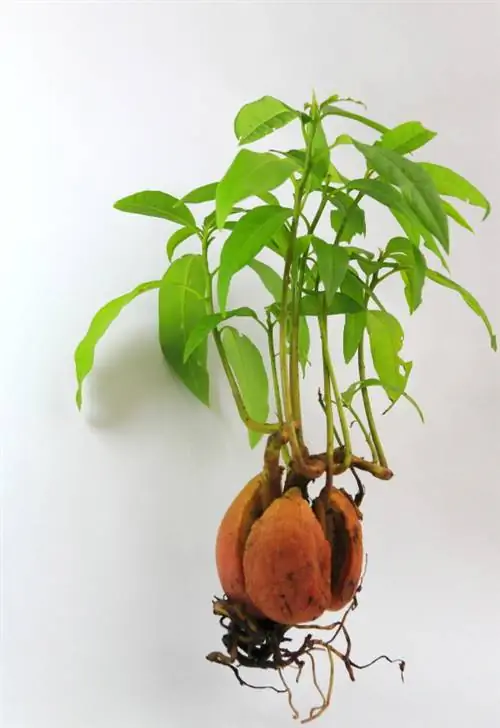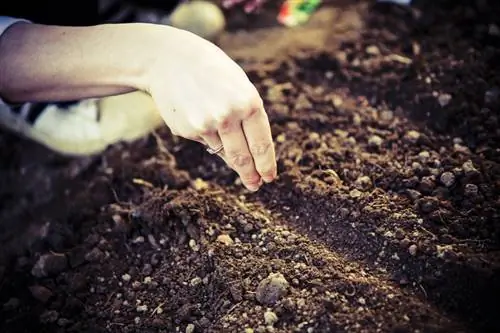- Author admin [email protected].
- Public 2023-12-16 16:46.
- Last modified 2025-01-23 11:20.
Bluebells (Campanula) can be propagated quite easily by seeds - as long as you know how it works. Although vegetative propagation is possible by dividing large perennials, growing cuttings is usually not successful.

How can I propagate bluebells?
Bluebells (Campanula) are best propagated by seeds. Do not cut off the spent inflorescences, collect the seeds or buy single-variety seeds. Grow the seedlings on the windowsill from the end of February and plant them in the bed or pot in May.
Many bluebells self-sow
If you want to have a thick carpet of bluebells in your garden as quickly and without a lot of work, then don't cut off the faded inflorescences. This may take some effort because these wilted parts of the plant look very unsightly, but the plant - if it has been pollinated - produces seeds and even sows them itself. After a short time you will find numerous small seedlings around the mother plant. Of course, you can also collect the bellflower seeds or buy them separately.
Prefer bluebells in spring
Bluebells can be grown on the windowsill from the end of February / beginning of March. How to grow small seedlings for the coming season:
- Prepare growing pots with growing or herb soil.
- Indoor greenhouses (€29.00 on Amazon) with a hood are ideal for growing small seedlings.
- The warm, humid climate that is so pleasant for seedlings quickly prevails there.
- However, you must ventilate the indoor greenhouse at least once a day.
- How to avoid mold formation.
- Sow the very fine, light seeds.
- Keep the substrate slightly moist.
- Place the growing container in a bright and warm place.
- However, avoid direct sunlight.
The seedlings can then be placed in the bed or in the bucket from around mid-May, provided it is warm enough and no more frosts are expected. The young bluebells must not get any frost.
What you need to consider when sowing
So far, so easy. However, growing bluebells, especially from self-collected seeds, is not as easy as you think, because
- many species of bellflowers are dark germinators, i.e. H. their seeds must be covered with soil.
- Others, on the other hand, are light germinators, i.e. H. they must not be covered with earth at all.
- In addition, many bluebell seeds require stratification.
- This means they need to be kept in the fridge for a few weeks to months before sowing.
Which of the measures described applies exactly depends on the specific type and variety of bellflower you want.
Tips & Tricks
You can also simply propagate Campanula perennials that have become too large by dividing them. The best time to do this is whenever you want to repot potted plants - i.e. anytime during the growing season. Bluebells planted in the garden, on the other hand, should be planted in either early autumn or early spring (i.e. H. be divided before budding).






